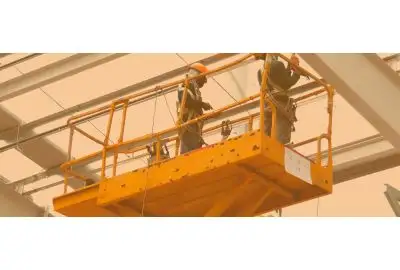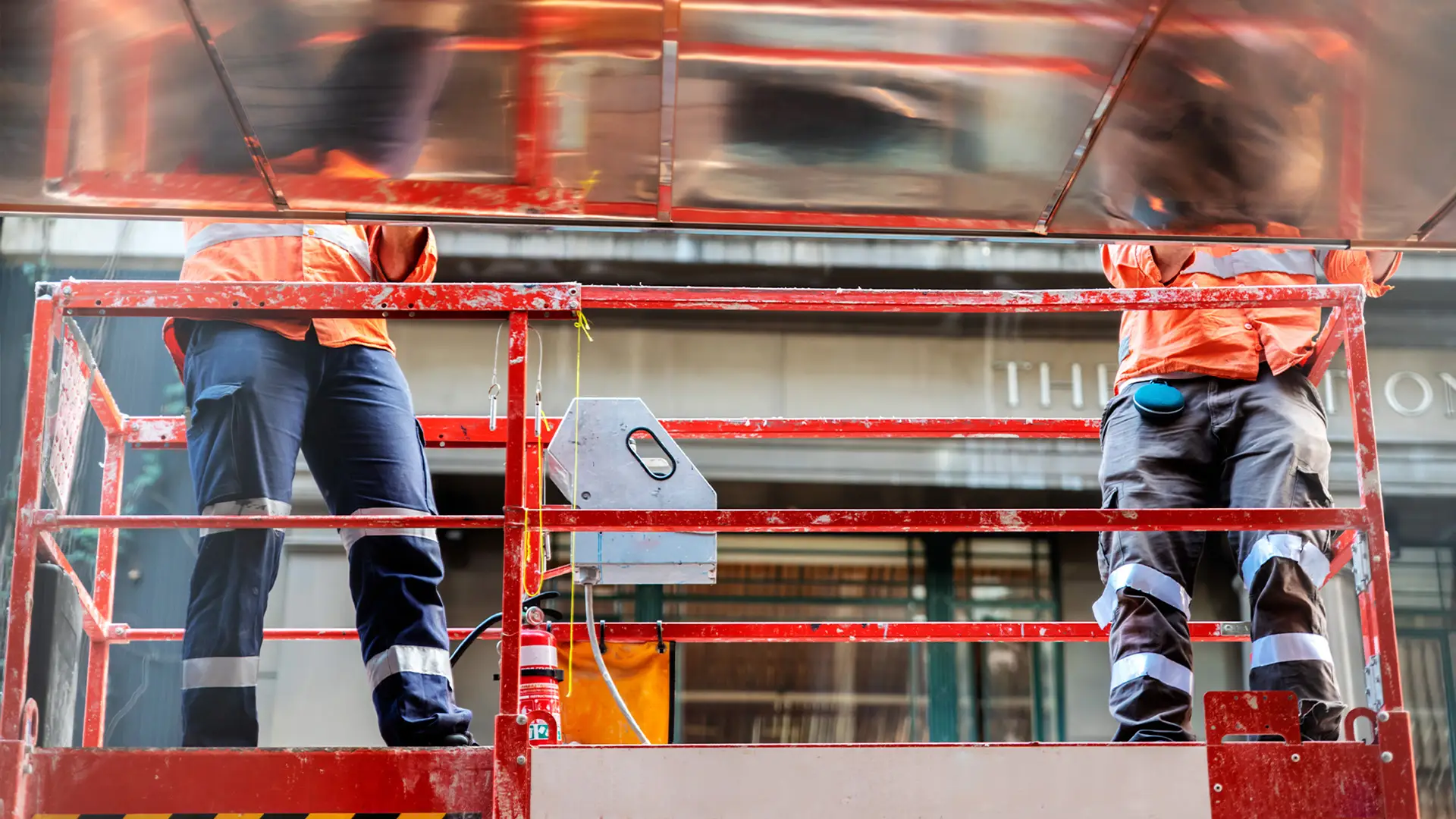Fall Protection and Scissor Lifts

Scissor lifts are popular tools in the construction and maintenance industries due to their ease of use, versatility, and ability to reach high places. However, with great power comes great responsibility—especially when it comes to worker safety. When working at height, fall protection is a critical concern, and OSHA has specific regulations in place for scissor lifts.
Many scissor lifts can elevate workers up to 60 feet or more. A fall from such heights is extremely dangerous and can be fatal. While these lifts are generally safe when used properly, accidents still happen. It’s essential to understand and follow all safety guidelines to minimize risks.
Some people believe that proper training eliminates the risk of injury, but this isn't always the case. Job sites are unpredictable, and various hazards can affect even the most experienced operators. That's why it's important to go beyond just following the minimum standards and ensure additional layers of protection are in place.
OSHA Fall Protection Requirements for Scissor Lifts
According to OSHA, employers must provide fall protection for employees working at heights of four feet or higher in general industry and six feet or higher in construction. For scissor lifts, this means fall protection must be in place when workers are on the elevated platform. This includes guardrails, personal fall arrest systems, or other approved methods.
Additionally, OSHA requires that all equipment is inspected before use and maintained regularly. Employers must also provide training on fall protection equipment and ensure that all workers are aware of the potential dangers of working at height.
Types of Fall Protection for Scissor Lifts


Fall protection for scissor lifts typically involves either guardrails or a personal fall arrest system (PFAS). Both options are effective, but each has its own set of requirements and considerations.
Guardrails
Most scissor lifts come equipped with guardrails around the platform. These must be at least 35 to 45 inches high and meet OSHA specifications. Guardrails are an essential part of fall protection, especially for platforms that operate at lower heights. However, some argue that they are not sufficient for taller lifts.
While OSHA sets the minimum standards, many companies choose to implement stricter protocols. For example, some require workers to wear PFAS even when guardrails are present, particularly for lifts that reach over 60 feet. This added layer of protection can significantly reduce the risk of serious injury or death.
Personal Fall Arrest System (PFAS)
A PFAS consists of a full-body harness, lanyard, and anchor point. This system is designed to stop a fall before the worker hits the ground. Most scissor lifts have built-in anchor points, making it easy for workers to connect their harnesses. Using a PFAS is especially important when guardrails are removed or when the platform is unstable.
In some cases, parts of the guardrail may need to be removed to allow for better access. In those situations, OSHA requires the use of a PFAS in addition to the remaining guardrails. This ensures that workers are protected even when the platform is partially open.
There are numerous reports of workers being ejected from scissor lifts due to improper use or equipment failure. One notable case from 2021 involved a worker who fell to his death after driving over an unmarked hole. This highlights the importance of following all safety procedures and being aware of the environment.
Best Practices for Scissor Lift Safety
Before using a scissor lift, always perform a thorough inspection. Check for any damage, loose parts, or signs of wear. Ensure that all safety features, including guardrails and anchor points, are in good working condition. This helps prevent unexpected failures during operation.
Proper training is also crucial. Workers should be familiar with how to operate the lift safely, how to use fall protection equipment, and how to respond in an emergency. Training should be ongoing and include regular refresher courses to reinforce best practices.
Regular maintenance is another key factor in ensuring scissor lift safety. Equipment that is not well-maintained is more likely to fail, increasing the risk of accidents. Schedule routine checks and repairs to keep everything running smoothly.
Finally, consider implementing additional safety measures beyond what is required by law. This could include installing extra guardrails, providing more detailed training, or using advanced monitoring systems. The goal is to create a work environment where safety is always the top priority.
Industry Standards for Scissor Lifts
In addition to OSHA regulations, there are industry standards that provide further guidance on fall protection. Organizations like ANSI and ISO develop these standards to ensure that equipment meets the highest levels of safety and performance.
ANSI Standard
One relevant standard is ANSI A92.20-2018, which covers the design, testing, and maintenance of mobile elevating work platforms. This standard includes specific requirements for guardrails and fall arrest systems, helping to ensure that scissor lifts are as safe as possible.
ISO Standard
The ISO 12100-1:2010 standard outlines general safety requirements for machinery, including scissor lifts. It emphasizes the importance of designing equipment with safety in mind and provides guidelines for fall protection systems and structural integrity.
How PowerPak Can Help
At PowerPak, we focus on providing fast and reliable access to essential safety equipment. We understand that waiting for a safety harness or fall protection device can lead to unsafe practices, so we prioritize quick delivery and availability.
Waiting 2-3 weeks for a safety harness is not an option. Our goal is to ensure that workers have the right gear when they need it most.
Read more about how to properly use safety harnesses.
We deliver quickly, often within a day of order placement. We maintain a large inventory to avoid backorders, and our team responds to inquiries within 30 minutes. With over three decades of experience in the utility and infrastructure industries, we know what it takes to keep workers safe.
Explore our offerings at PowerPak.net.
Transparent Pvc Label,Gloss White Pvc Label,Transparent Pvc Sticker,Transparent Pvc Water Based Permanent Art Paper
SOONTOMAX (TAISHAN) LABEL MATERIAL CO.LTD , https://www.stmlabel.com
